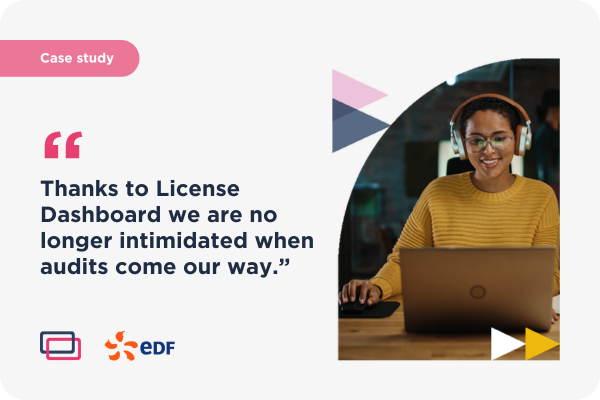As a recent returner to License Dashboard, I have had the opportunity to reflect on how other leading SAM tools manage the often tricky – and fraught with gotcha’s – server environment.
It’s clear to me now that there is no other tool I would rather use when understanding a server environment than License Manager, especially one that has virtualization technology in place. But first, why is licensing a server environment, or virtual infrastructure, such a big concern for companies…
Aren’t most companies migrating, or at least on their way, to cloud?
The answer to this, of course, is no. Cloud based services, whether it’s hosted applications or fully hosted environments, come with their own set of drawbacks. The first of which is network connection dependency, which can sometimes be an issue for companies. The sensitivity of data can mean that an internet connection is not possible, and with that comes the need for internally hosted, and secured, servers.
Experience that can’t be bought
Secondly a great number of companies have existing technical teams who are there, dedicated, and aligned with the company’s values and needs. They know the goal, and often have the experience required to ensure that their company or service continues to run. Why would a company want to lose that level of experience to a hosted solution?
I could go into more reasons as to why there is such a diverse way in which companies want to manage their infrastructure, but it’s clear that people will always want to do things their own way. However, for those who wish to host their own infrastructure, there are several challenges. While not all are SAM related, there is a large proportion of the ongoing costs that can be attributed to Software Licensing, and not just direct costs either.
An example of managing a virtualized environment
If we take Microsoft Windows Server as an example: it is required for the Physical Infrastructure (or hosts) to be fully licensed to the number of cores required. Microsoft requires 8 cores to be licensed per processor, and 16 cores minimum per server. Simple, right?
Not when you introduce virtualization.
Windows Server Standard, licensing all the cores on the server, still only allows you to provision two virtual machines. On a 40-core standard server, you would be required to license an additional 40-cores (80 total) to provision only two more virtual machines.
This is of course a push towards Windows Server Data Centre licensing, which only requires the physical cores to be licensed and allows unlimited virtualization. But, this doesn’t negate the costs associated with all other applications running on the server. What if I hosted a web portal (or shop) on just one of the virtual machines floating in this virtual cloud of mine? Well, I would need to license all the external users accessing the machine – via CALs or External Connector licenses.
Up until now, I can see you’re probably thinking about the simplicity of the licensing in this instance. Let’s now introduce clustering.
Clustering: A software licensing risk
If a company chooses to cluster their hosts, so that high availability is made possible through vMotion (the ability for an individual VM to move to a host which is currently able to run the VM at the best possible performance), then this can introduce a serious licensing risk.
Our external connector license will now be required on every host, increasing the licensing cost significantly. Additionally, the same applies for the underlying technology associated with the hosting of the website. If the SQL Server is split out from IIS, then there is an additional External connector cost on the server running the SQL Server. Not only that, but you’ve also got to ensure you maintain Software Assurance for that SQL Server instance, ensuring that you are able to leverage License Mobility across server farms.
Fortunately, there is a way to reduce this cost – through Host Affinity. Host affinity is an option available to some Virtualization technologies which allow an organization to limit the movement of a VM to a specific host, or host group, thus reducing the licensing cost significantly.
An understanding of virtualized environments
I have found that License Manager provides the simplest way to reflect all the above licensing scenarios. You can easily switch on the host movement within a cluster and see a true licensing cost for all the servers. Similarly, you can do it the other way. To my knowledge, this is not available in other tools.
Additionally, you can simply exclude hosts using the affinity rules that I previously mentioned. You can leave these rules on and update the compliance position whenever you take a new data import. It’s so flexible, interrogatable and powerful to do.


























